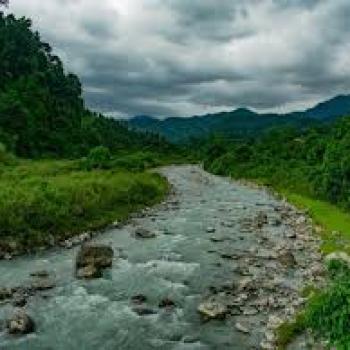
RIVERS OF DOOARS
The Dooars region, nestled in the foothills of the Eastern Himalayas in West Bengal, India, is blessed with a network of rivers that flow through its verdant landscapes, enriching its biodiversity and supporting the local communities. Here are some of the prominent rivers that flow through the Dooars:
Torsa River: The Torsa River is one of the major rivers of the Dooars region. It originates in the Chumbi Valley in Tibet and flows through Bhutan before entering West Bengal. In the Dooars, the Torsa River meanders through lush forests and tea gardens, eventually joining the Brahmaputra River in Bangladesh.
Jaldhaka River: Originating from the Neora Valley National Park in the Eastern Himalayas, the Jaldhaka River flows through the Dooars, forming a natural boundary between India and Bhutan. It is known for its crystal-clear waters and scenic beauty, attracting tourists and nature lovers.
Teesta River: While the Teesta River does not flow directly through the Dooars, it forms an important part of the region's landscape and ecology. Originating in the Himalayas of Sikkim, the Teesta River serves as a lifeline for the Dooars, providing water for irrigation, hydropower generation, and supporting the region's rich biodiversity.
Murti River: The Murti River is a tributary of the Jaldhaka River and is one of the key rivers of the Dooars. It originates from the Neora Valley National Park and flows through the Gorumara National Park before joining the Jaldhaka River. The Murti River is known for its picturesque landscapes and tranquil surroundings.
Diana River: The Diana River is another important river of the Dooars region. It originates in Bhutan and flows through dense forests and tea gardens of West Bengal before joining the Brahmaputra River in Bangladesh. The Diana River plays a vital role in the irrigation and agriculture of the region.
Sankosh River: It originates in Bhutan and flows through the Dooars region, forming a natural boundary between Bhutan and India. The Sankosh River is significant for its hydroelectric potential and supports diverse aquatic life.
Kaljani River: The Kaljani River is a significant river in the Dooars region of West Bengal, India. It originates from the Chumbi Valley in Tibet and flows through Bhutan before entering the plains of West Bengal. In the Dooars, the Kaljani River meanders through dense forests, tea gardens, and agricultural lands, enriching the soil and supporting the local ecosystem. It eventually joins the Brahmaputra River in Bangladesh. The Kaljani River plays a vital role in irrigation, agriculture, and the livelihoods of the people living along its banks.
Gharghariya River: The Gharghariya River is another important river in the Dooars region. It originates in the hills of Bhutan and flows through dense forests and tea estates of West Bengal before joining the Brahmaputra River in Bangladesh. The Gharghariya River is known for its scenic beauty and clear waters, attracting tourists and nature enthusiasts. It also serves as a source of water for irrigation and supports the rich biodiversity of the region.
Jayanti River: Jayanti River, also known as the Jayanti Jhora, is a significant river flowing through the Dooars region of West Bengal, India. It originates in the Bhutan hills and meanders through dense forests and scenic landscapes before joining the Brahmaputra River in Bangladesh.
The Raidak River originates in the Eastern Himalayas of Bhutan. It is formed by the confluence of several tributaries, including the Mo Chhu and Pho Chhu rivers. After its formation, the Raidak River flows southward, entering India through the Dooars region of West Bengal. The Raidak River has significant hydroelectric potential, and several hydroelectric projects have been developed along its course. These projects contribute to the region's electricity generation and infrastructure development.
